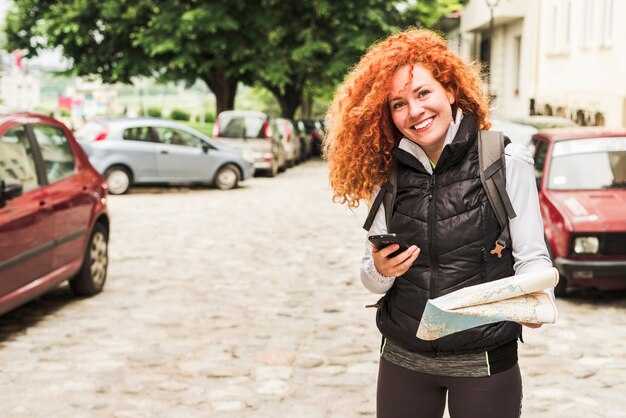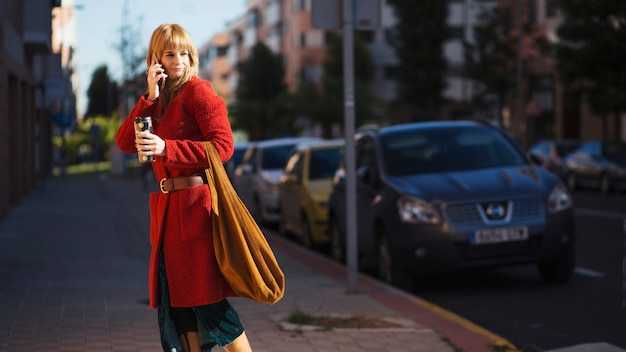To start, book ahead with licensed taxis or official apps to lock in a reliable fare. In the Netherlands, these websites and apps reveal the average fares, typical charges和 minutes you’ll spend in transit, helping 旅行者 gauge the cost before they travel. When you arrive, you can opt for a clearly priced ride instead of flagging down a taxi on the street. weve tested several providers and found that these options consistently save time and money.
Expect a base fare around €3–€4, then about €1.80–€2.50 per kilometer and €0.30–€0.60 for each minute of waiting; these charges reflect normal city rides. A typical ride from Amsterdam Central to Schiphol averages €40–€60 in daytime, rising by around 20% at night or during peak traffic.
Airport pickups often carry a surcharge of about €5–€8; intercity trips follow higher charges 在 surroundings of airports and during evenings and weekends. If you booked earlier, the app will display a forecasted total before you confirm. Use licensed taxis or trusted apps to ensure clear receipts and fair fares.
Be cautious and verify the meter or upfront quote before you start. If a driver offers a fixed price that seems too high, compare with the app estimate or another licensed option. These steps help travelers stay cautious and informed in the country.
In major cities, you’ll find sharing rides and traditional taxis; compare options on websites 和 transportation apps. If you’re curious about rides like uber or local equivalents, check availability in your destination and read local websites for current terms and minimum fares. For travelers who want predictable costs, ask the driver for an estimated fare before departure, and consider a fixed-rate option if offered by the app.
Fare Structures: Understanding Metered Taxis, Flat Rates, and Uber Pricing in Dutch Cities
Check the price estimate in the taxi app before you ride; this simple step helps you choose the best option for your location and plans–metered taxis, flat-rate transfers, or Uber–without surprises when you arrive. Save the file for offline reference.
Metered taxis in Dutch towns use a base fare plus distance and time, with values that vary by city. In normal conditions, expect a base of about €3.50–€4.50, €1.80–€2.50 per kilometer, and €0.40–€0.90 per minute of waiting. Those figures can rise at night or with extra luggage. When you’re near central neighborhoods, you’ll typically reach your destination faster than you expect, and you can walk to nearby transit stops if you prefer.
Flat-rate options appear mainly for airport runs and some intercity connections. A Schiphol to Amsterdam center transfer often falls in the €35–€45 range, while longer airport hops to nearby towns may vary by operator and distance. Always confirm the flat price in the app or with the driver before departure, and use it when you want predictable costs, especially if you’re traveling with bulky bags.
Uber pricing blends a base fee, per-kilometer and per-minute charges, plus occasional surge. In major towns, look for roughly €1.50–€2.50 as the base, €0.60–€1.30 per kilometer, and €0.15–€0.40 per minute. Surge multipliers can push rates higher during peak times or events, so a ride in the city center may cost more. For short trips within the city, UberX often provides a competitive option when you compare with a meter or a fixed-rate ride.
In this article, use the price estimates to compare options and tell your plan to a friend. You can find better values by comparing across options. While rides can be convenient, wiser choices save money: if you’re near your hotel and the distance is short, walking or using a bicycle for short hops is often cheaper and faster. Those routes work well when you can bike along bike lanes or cycle-friendly streets in your location, and using bicycles can be a better option than a taxi on light traffic days.
источник: local transit guides and user feedback note these patterns and emphasize airport fixed rates and city-specific variations. They remind you to verify the current price before boarding and to avoid unlicensed drivers by choosing licensed taxis or rideshare services through official apps.
Where to Hail a Ride: Airport Taxis, Train Stations, and City Hubs in Amsterdam and Beyond

Always use the official taxi stand outside Schiphol arrivals for a meter-based ride that comes with a clear bill. If you value reliability, this is definitely the quickest way to start in Amsterdam.heres a quick rule: pick the stand with a clearly displayed plate, confirm the location and the company, and agree on the estimated fare before you sit. Outside the airport and at major hubs you’ll find multiple options, but the stand guarantees a fair meter rate and helps avoid surcharges. Weve found that reading the plate and sticking to licensed drivers gives you a safer, smoother experience and a better chance of a fair bill.
Airport Taxis: Schiphol and Major Hubs
Schiphol’s official stands are located just outside the arrivals area. The meter starts with a base fare and then per-kilometer charges apply; a ride to Amsterdam’s center typically costs €35-€50, depending on traffic. If a driver offers a fixed price, compare it to the meter estimate because surcharges may apply during late-night hours or holidays. Have your destination ready to avoid delays and confirm the vehicle’s plate and company before you submit payment. If you notice a bolt icon on the meter or payment screen, it usually signals a card option, so ask for the receipt and note the charge details.
Train Stations and City Hubs: Amsterdam and Nearby Towns
Outside train stations such as Amsterdam Centraal and Sloterdijk you’ll see official taxi ranks with multiple firms offering service. For short trips within Amsterdam, a ride from Centraal to Dam Square often falls in the €10-€20 range; longer routes or peak traffic push the price higher. In towns located near Amsterdam–Haarlem, Leiden, Utrecht, Rotterdam–taxis are also available at stations and central squares; fares rise with distance and time. To avoid surprises, tell the driver your exact location (address or landmark) and request a clear quote before you submit payment. Information on the meter and the company helps you agree on a fair rate, and keeping the plate visible makes it easy to verify later if needed. This setup gives you a relatively straightforward option at each location, with multiple firms offering service and the chance to agree on the best rate before you ride.
| 地点 | Where to Find | Typical Cost to City Center | Notes |
|---|---|---|---|
| Schiphol Airport (AMS) | Official taxi stand outside arrivals | €35-€50 | Meter-based; base fare applies; surcharges may occur late night/holidays; read plate |
| Amsterdam Centraal | Outside main entrance | €10-€20 (to central areas) | Short, reliable rides; official stand available |
| Haarlem Central | Outside main station | €30-€60 | Nearby town; higher fare with longer distance |
| Utrecht Centraal | Outside main hall | €60-€90 | Longer distance; meter-based pricing applies |
| Rotterdam Centraal | Outside main station | €80-€120 | Significantly longer ride; use licensed stand |
Payment Methods and Tipping: Cash, Card, Contactless, and Gratuity Guidelines

Use card or contactless payments on every ride; it speeds up the stop and you get a receipt for costs during sightseeing around the city.
Accepted payments vary by company and location, but you will typically find these options:
- Cash is still accepted by many drivers, though some firms prefer electronic payments.
- Card payments, including debit and credit, are widely supported and convenient for most travelers.
- Contactless payments using a card or smartphone wallet (Apple Pay, Google Pay) work at most taxis and are often faster.
- Some taxis accept local apps or QR code payments; having both card and cash ensures you can complete a ride if one method fails.
Schiphol airport taxis usually display the tariff upfront; verify the tariff on the meter, especially for airport runs where a surcharge can apply. Tariffs are regulated by the city, with a base fare plus per-kilometer charges and waiting time. Typical ranges are a base fare around 3–4 euros, roughly 1.5–2.5 euros per kilometer, and about 0.3–0.6 euros per minute of waiting. Late-night rates or specific routes may add small extra charges.
Gratuity guidelines: tipping is not mandatory in the Netherlands, but rounding up or adding 5–10% for good service is common. If you ride with a company that supports it, you can add a tip on the payment screen; otherwise, cash tips are perfectly acceptable. In bustling streets and amsterdams, local riders often show appreciation with a small tip after a smooth transfer. If a fare seems unexpectedly high, you can file a complaint with the company; most firms address disputes and refunds when warranted.
Safety and Legitimacy: Driver Verification, Vehicle Checks, and What to Do If Something Feels Off
Always verify the driver’s identity and the vehicle before you enter. In the netherlands, taxis belong to a trusted network and operate with clear driver IDs and visible plates. If you placed an order via a centre or app, compare the details on screen with what’s inside the car and on the badge, and only proceed if they match; there weve added a quick check to confirm.
Ask for a metered ride or for a fixed pricing option before the ride starts. Metered pricing is normal and helps prevent surprises; if a driver offers a higher rate because you’re in a bustle centre or after hours, insist on the standard rate and request a receipt.
Prefer payments by card or contactless; cash remains accepted in some places, but digital options reduce disputes. If you can, start the ride with the preferred payment method in the app so you have a record.
If something occur and the driver says something contradictory, stop at a safe spot and exit, especially if the car takes an unfamiliar route or lacks a taxi sign. You could ask the driver to pull over in a well-lit, busy area and use a taxi stand when possible.
Record and report: note the specific car details, plate, and driver name; take a photo if allowed; then submit or file a report with the taxi operator or local transport authority. Keep a file with the ride details for reference in case you need to dispute charges.
Bottom line: these checks are normal practice that protect passengers and people. There are options such as official stands, company dispatch, or app orders; in netherlands cities, you should feel confident about the service you use, and you can avoid surprises by sticking to trusted providers.
Common Pitfalls and Ways to Avoid Overcharges, Delays, or Scams
Recommendation: Check local rates before you ride using the taxi app or the driver’s meter. If youre unsure, ask for the estimated fare upfront. This simple check avoids surprises and protects your budget.
Most overcharges happen when a driver uses a longer route or applies airport or late-night surcharges. Before you start, repeat your idea of the shortest route and ask for the estimate for the entire trip; if the route looks longer than expected, pause and discuss a shorter option. However, they might respond in a friendly way, but you can give yourself control by insisting on the shortest reasonable distance. If you disagree, you can then switch to a different ride option.
Get a full receipt at the end; it shows start and end times, distance, and the rate breakdown. If you spot a mismatch, compare it with the app record and then file a note with the company or your bank if needed.
Pay by card or app whenever possible; cash handling can be manipulated and leaves less trace. If you pay with cash, request the receipt and note the driver’s ID so you can file a dispute later.
Use a guided approach to stay in control: share your ride details with someone, and check your map for the actual path. If delays occur, ask for an ETA and consider alternatives such as trams or buses to explore your visit and keep your day on track.
Be vigilant for common scams: drivers who refuse the meter, pressure you to take an earlier pickup by promising a lower upfront rate, or take odd detours. Take a photo of the plate and the fare card, providing notes so you can file a report if necessary. If they push, end the ride and choose another option.
In this article, check out practical steps to avoid common pitfalls. During busy periods, book ahead or ride earlier to avoid congestion and long waits. Their guidance apps can show you preferred lanes and traffic, helping you decide what to take: a ride, or walk, or use a tram, bus, or ride-share instead. There are many options to keep your day moving smoothly.



评论